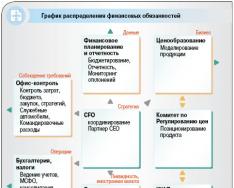Many website owners think about what is better: search engine optimization or contextual advertising? In what direction is it preferable to direct the website budget? In this article we will try to answer these questions.
Contextual advertising and search engine optimization (SEO) are one of the most popular tools for promoting websites on the Internet. It is worth noting that context and SEO require certain costs, which are not always available to novice webmasters.
Choice of promotion: contextual advertising or SEO
Context and SEO have some common features- the results are displayed in search engines and, accordingly, on the profit from the Internet project. These tools are aimed at attracting motivated people to the site. target audience.
In addition to similarities, there are also big differences.

Aspect of time
You can, for example, do:
- modify pages (optimize, add text);
- improve usability;
- change snippets;
But you will see changes no earlier than in a month.
Settings

SEO doesn't allow for such fine-tuning. This leads to a higher percentage of untargeted visits and refusals. But given the fact that you don’t pay for every click from the search results, this is not so critical.
Relevance to the request
Contextual advertising management systems make it possible to edit advertisements and completely change their text. This means that during testing, you can find the most converting ad text options that will best match the user’s request.
Conversion
Contextual advertising is marketing tool with one of the highest conversion rates. This is due to the extensive customization and targeting capabilities. Search engine optimization, as a rule, cannot boast of such high conversion.

Monitoring
An advertising campaign in context requires constant vigilant monitoring. This is due to the fact that the cost per click and position can constantly change. The fact is that the number of ads for your requests may be increased by competitors or decreased, which will change the position of impressions. To optimize costs, you need to regularly intervene in the initial campaign settings.
SEO promotion does not require such careful monitoring. However, during search engine promotion, it is necessary to constantly engage in analytics and monitor changes in search engine algorithms and competitors’ strategies.

Transition cost
The cost of attracting a target user to a website in contextual advertising is quite stable. If there is a need to increase the number of transitions, then you need to increase the budget proportionally. In addition, you should consider the possibility of increasing the cost per click, which will raise your ads above the competition.
At the first stages of search engine SEO promotion, the cost may seem quite high. However, over time, this figure will decrease significantly and will be significantly lower than the cost of acquisition using contextual advertising.
Inertia of the effect
When you use up the entire balance in your account, contextual advertising will immediately stop displaying. If you stop funding search engine SEO promotion, the results will remain in occupied positions for some time and then gradually begin to decline as competitors become more active.
What is better contextual advertising or SEO?
Advice
It’s better to act like this: after launching a commercial project, for quick results you need to use contextual advertising. Yes, you can short time attract the target audience to the site. In parallel with the context, it is necessary to engage in search engine SEO promotion.
In the process, it will be possible to gradually reduce the cost of contextual advertising, but it all depends on each individual case and budget. Sometimes this is not advisable. By reducing costs for context, you reduce the number of conversion users, which means you deprive yourself of additional profit.
Owners of commercial websites often face this choice. Comparing these two tools is not entirely correct. Both approaches have their pros and cons, and both can be effective or fail. They're just designed for different purposes. In the article below we will look at in which cases it is better to choose SEO, and in which - context.
To bookmarks
Theory
SEO is a set of measures to raise a website in search results. These include analytical work(evaluation of the project and its competitors, creation of a promotion strategy), sitemap development and text writing, technical actions (correcting errors on the site, adjusting the code according to SEO criteria, improving usability, creating additional functionality), internal and external optimization (selection of landing pages and meta tags).
So, as part of the promotion, competitors’ websites are assessed and a strategy is developed. After this, text content is created, errors on the site and in the code are corrected, usability is improved and new functions are introduced. In parallel with this, work is underway with landing pages, meta tags and link mass.
SEO just serves to ensure that your website ranks in the best places.
In order to set up a campaign, you must:
Example 1
You flower shop. You organized delivery around the city or established cooperation with partners in other regions, so you decided to set up online sales. To do this, you created an online store. It does not rank high in search results because no SEO work has been done. There is no traffic, and an influx of buyers coming from the search engine is not expected. But applications are needed urgently, since Valentine’s Day and March 8th are just around the corner.
Example 2
You are the owner of a website with training courses. Do you want to see more applications for purchasing courses, views of previews, and overall more visitors than now. Your target client is a person who has decided to engage distance education not spontaneously. Before buying online courses, he will study the offers that the search results will give him. And in this case, you need your website, with excellent graphics and readable texts, to be among the first to catch his eye.
Solution: SEO promotion
Using this approach, be prepared for the fact that results will not be visible immediately, but after 3-6 months. Sometimes this period can last for a year - it all depends on the condition of the site and external factors. But the resulting effect will last for long years and will not require large financial investments from you. All that remains is to maintain what has been achieved (this is not difficult).
The examples clearly show the main differences between the two tools. If you see yourself in one of these situations, then use the solution given. This will help you spend your budget wisely. But we also recommend studying all aspects of these approaches in order to correctly place emphasis in the future.
To increase the influx of visitors to the site, it is traditionally used search engine promotion (SEO) and/or contextual advertising.
Business owners, not fully understanding the essence of each of the services, often remain dissatisfied with the work of the contractor due to their own high expectations.
Differences between contextual advertising andSEO
Search Engine Optimization(SEO, SearchEngineOptimization, search engine optimization) is a set of actions with a website to improve its position in search results (in Belarus and Russia the most popular search engines are Yandex and Google). May include developing a semantic core, writing SEO texts, working with meta tags, building link mass, etc.
contextual advertising- displaying ads in Yandex and Google search results, as well as on display network sites at the selected time, in specified positions and in a target audience relevant to the business. The service is in high demand among owners of young sites, as well as for notification potential clients about promotions and discounts.
|
Evaluation criterion |
Context |
|
|
First results |
Improvement of positions for promoted queries in approximately 1 - 3 months. |
An increase in website traffic is observed immediately after the launch of the campaign. |
|
Visitor cost |
It fluctuates: depending on the competitiveness of the topic, the frequency of the selected queries and the initial level of optimization - both of the resource being promoted and of competitor sites in the TOP 10 (5, 3) of the search results. |
It fluctuates: the more competition, the higher the cost per click. |
|
Focus on the target audience |
Medium or high. |
High: with proper targeting, ads will be shown only to interested users. |
|
Campaign management control |
It fluctuates: the result of the modifications made is delayed in time and is not immediately noticeable. Because of this (and other factors), it is sometimes difficult to accurately determine which actions caused specific changes in traffic flow. |
High: Changes can be made at any time, tracking the effectiveness of each action. |
|
The need to improve the site |
As a rule, it is necessary to improve the software component of the site, rewrite/add texts, work with media content and site usability, etc. |
Rarely. |
What to choose? Let's look at examples
The considered marketing tools complement each other; Often, for commercial and information-commercial resources, it makes sense to simultaneously invest in both contextual advertising and SEO. However, if you need to focus on one thing, you can name a number of examples, when is it more profitable to usecontextual advertising Yandex.Direct or Google.Adwords:
- You need to urgently/for a limited period of time advertise a promotion (sale, special offer).
- You offer a product or service to a narrow target audience (for example, you sell only Mango brand dresses or only Gerda doors).
- You are doing business in an environment with high levels of supply and demand.
- There is a possibility that the site will be subject to a “filter” or “ban” (especially relevant for resources such as online sex shops, casinos and some other topics).
The Megapolis Media company offers you services for creating and conducting advertising campaign in Yandex.Direct and/or GoogleAdwords. We guarantee you a professional approach when developing an advertising strategy, launching, analyzing and adjusting the campaign, as well as regular reports and assessment of the effectiveness of the campaign for the selected reporting period.
06.03.2018 Reading time: 4 minutes
What is search engine optimization (SEO)?
is a set of measures for external and internal website optimization. The main goal is to increase positions in search engine results for effective, selling queries.
Users, entering a particular query in the search bar, are already interested in specific information, product or service. This intent is expressed in the form of search queries. They can take the desired action, that is, order a product or service, if they go to the site they are interested in from the search. Search engine optimization is carried out based on the query core - a list of the most effective keywords, which potential buyers enter in the search bar.
How does contextual advertising work?
Payment to the search engine in contextual advertising is made for clicking on ads. There can be any number of impressions, but the click on the ad itself is paid for. The cost varies greatly and directly depends on the competitiveness of requests in different regions. The approximate monthly budget is 5,000 rubles. and higher, but sometimes you may not even spend 2,500 rubles.
Advertisers often use context for quick sales because... the very next day after contextual advertising settings you can start receiving calls from clients. Of course, there are also disadvantages. You will need to constantly pay for clicks. And if the budget is over and you turn off advertising, then you shouldn’t wait for any more calls. Business will stop.
You can also use context for single-page websites ( landing page), and for full-fledged multi-page websites of companies and online stores. But according to statistics, contextual advertising works better when referring to a one-page site, because The target user comes to it for a specific product or service.
What is the difference between SEO and contextual advertising?

No website can get to the TOP without minimal initial optimization. If you continuously use the context, perhaps such a website will get to the TOP, but at least in a year, and most likely much later. And this is with a little optimization. If you don’t deal with the meta tags of the main page, then the site, in principle, should not think about the TOP.
Unlike contextual advertising, SEO optimization will help your website get into the TOP PS within a period of 1 to 6 months for various search queries. We are talking about optimizing the company’s website for 1-2 cities. Very competitive requests require a little more time.
SEO cannot be cheap by definition, but compared to context, the difference is noticeable. After the site gets to the TOP, you just need to maintain it by periodically writing new articles. Just imagine - you are in the top five and don’t pay a single ruble for it. In contextual advertising, on the contrary, you will have to constantly replenish your budget.
Landing page can also be optimized, but getting such a site to the TOP may take longer than a web resource with at least 20 pages, each of which is aimed at promoting certain queries.
What are the advantages of SEO over context?
When is it worth combining SEO and contextual advertising?
Contextual advertising affects the issuance of PS due to behavioral factors. Yandex looks at user behavior on the site, and contextual advertising allows you to link this behavior to a specific search query. If a user came to the site with the request “interior partitions” and spent 3 minutes on this resource, for Yandex this is a clear signal that the site meets the user’s expectations and meets a specific request. Such signals through the PF are taken into account in the overall ranking of the site.
So you have additional method announce a new website on the Internet and improve its position in organic rankings. Naturally, before starting an advertising campaign, the site must:
- meet all PS requirements and not be inferior to competitors;
- contain interesting content that will retain visitors for a long time and thereby increase it in the eyes of search engines.
Additional positive signals for the PS can be set goals and their implementation in the Yandex.Metrica and Google Analytics statistics systems.
So, when should you combine SEO and PPC for it to be beneficial?
If all requirements are met and a competent approach to running a campaign, paid contextual advertising can give an additional impetus to the natural development of your website!
What is better – contextual advertising or SEO?
This question is not entirely correct, since for the greatest results it is necessary to do both.
In the process, you will be able to reduce the budget for contextual advertising (it all depends on the specific case and available financial resources). Sometimes this is not entirely practical. By cutting costs on context, you reduce the number of conversion users, which means you deprive yourself of additional profit.
Sample documents

